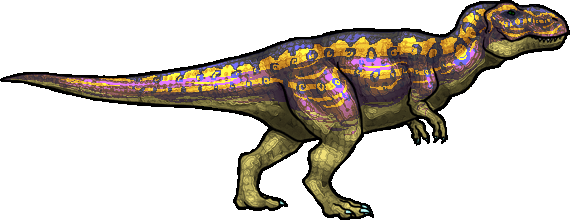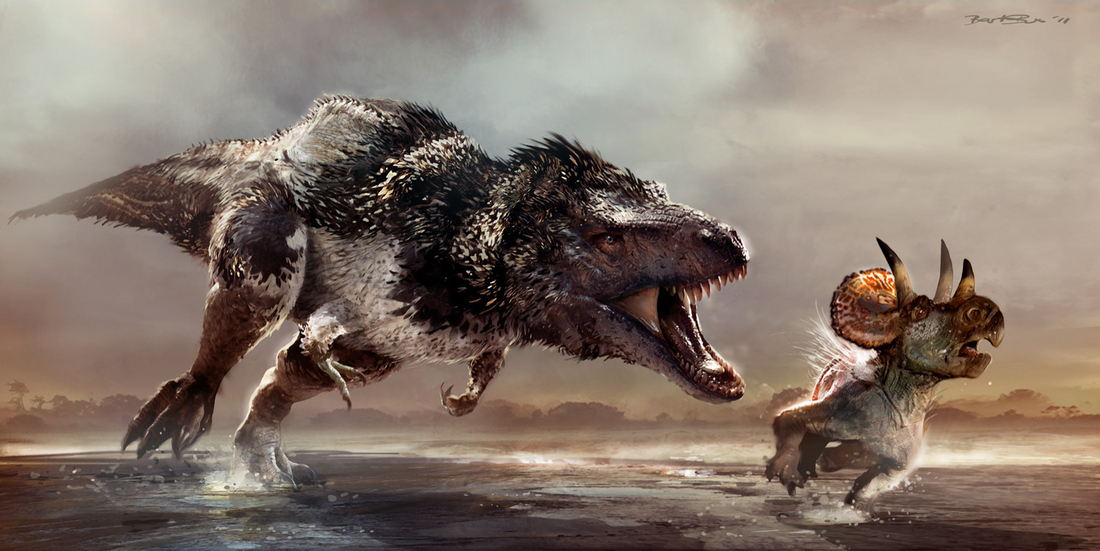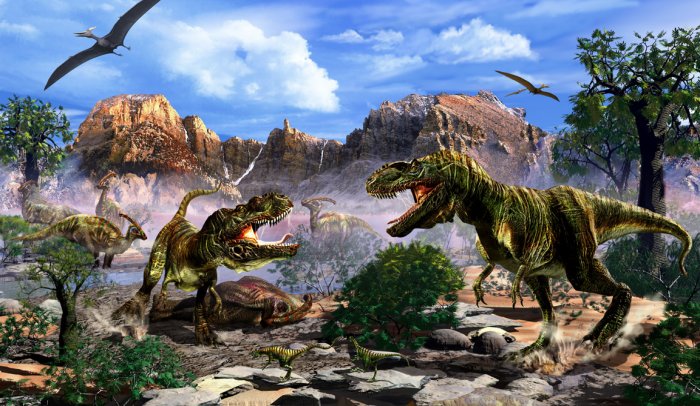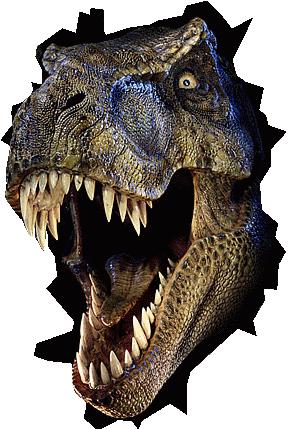Post by Delirious on Mar 25, 2015 19:34:20 GMT 2
Tyrannosaurus Rex

©2015 DeliriouStudios
Name Meaning: Tyrant Lizard King
Diet: Carnivour
Size: Half the size of Spinosaurus
Time: Late Cretaceous (84 - 80 million years ago)

Appearance
Tyrannosaurus Rex was one of the largest land carnivores of all time. They measured 12.3 metres (40 ft) long, and was 4 metres (13 ft) tall at the hips. The neck of Tyrannosaurus rex formed a natural S-shaped curve like that of other theropods, but was short and muscular to support the massive head. The forelimbs had only two clawed fingers, along with an additional small metacarpal representing the remnant of a third digit. In contrast the hind limbs were among the longest in proportion to body size of any theropod. The tail was heavy and long, sometimes containing over forty vertebrae, in order to balance the massive head and torso. To compensate for the immense bulk of the animal, many bones throughout the skeleton were hollow, reducing its weight without significant loss of strength.
While there is no direct evidence for Tyrannosaurus rex having had feathers, many scientists now consider it likely that T. rex had feathers on at least parts of its body, due to their presence in related species of similar size. Dr. Mark Norell of the American Museum of Natural History summarized the balance of evidence by stating that: “we have as much evidence that T. rex was feathered, at least during some stage of its life. But as there is no fossil evidence that they had feathers, the T-rex's of Thorn Valley will not have them.

Behaviour
T-Rex had heightened sensory abilities like relatively rapid and coordinated eye and head movements, as well as an enhanced ability to sense low frequency sounds that would allow tyrannosaurs to track prey movements from long distances and an enhanced sense of smell. Tyrannosaurus had keen vision. By applying modified perimetry to facial reconstructions of several dinosaurs including Tyrannosaurus, the study found that Tyrannosaurs had a binocular range of 55 degrees, surpassing that of modern hawks, and had 13 times the visual acuity of a human, thereby surpassing the visual acuity of an eagle which is only 3.6 times that of a person. This would have allowed Tyrannosaurs to discern objects as far as 6 km away, which is greater than the 1.6 km that a human can see. Tyrannosaurus could have been the strongest of any terrestrial animal that has ever lived. The calculations suggested that adult T. rex could have generated from 35000 to 57000 newtons of force in the back teeth, or the equivalent of three times the force estimated for a great white shark.
The debate about whether Tyrannosaurus was a predator or a pure scavenger is as old as the fossils themselves but it is most likely that Tyrannosaurus was a predator; like modern large predators it would readily scavenge or steal another predator's kill if it had the opportunity. There is lots of evidence that T-rex's lived in packs and it os believed that Tyrannosaurus was six times smarter than most dinosaurs and other reptiles. Most of their pray where armored or fast moving, meaning it would be easier for T-rex's to hunt in groups and their large brain size means that they could communicate well with each other.

Have any questions or things to add? please comment below!


